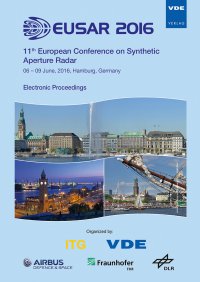Analysis of Orientation Effects of Crop Vegetation Volumes by Means of SAR Tomography at Different Frequencies
Conference: EUSAR 2016 - 11th European Conference on Synthetic Aperture Radar
06/06/2016 - 06/09/2016 at Hamburg, Germany
Proceedings: EUSAR 2016
Pages: 6Language: englishTyp: PDF
Personal VDE Members are entitled to a 10% discount on this title
Authors:
Joerg, Hannah; Hajnsek, Irena (German Aerospace Center, Microwaves and Radar Institute, Wessling, Germany & ETH Zurich, Institute of Environmental Engineering, Zurich, Switzerland)
Pardini, Matteo; Papathanassiou, Konstantinos P. (German Aerospace Center, Microwaves and Radar Institute, Wessling, Germany)
Abstract:
Synthetic aperture radar (SAR) tomography is a powerful approach to investigate the relationship between 3-D radar backscattering and physical structure of agricultural vegetation, which is not fully understood yet. In this paper, the focus is set on the characterization of polarimetric scattering and propagation effects within the vegetation layer as a function of species, time and frequency. This is done by separating the ground and volume scattering contributions applying a coherent layer cancellation to the multi-baseline (MB) multi-polarimetric SAR data set. The analysis of the herewith retrieved powers of the individual components supported by ground-measurements help to understand better the effect of physical change on the electromagnetic scattering behaviour. To assess the presence of orientation effects, a distance measure is applied to the volume-only coherences to decide if they fit the random volume or the general oriented volume model. The experimental analysis is performed on multi-frequency data acquired by the DLR airborne sensor F-SAR.


